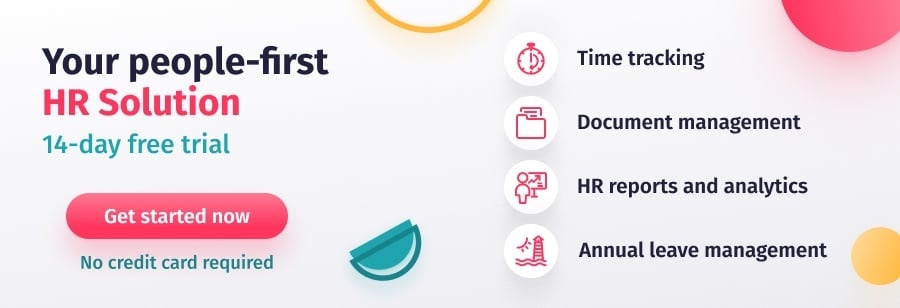Talking about salaries has been historically challenging to navigate for UK employees. On the one hand, employers have frowned upon discussing salary details with colleagues while at the same time requesting candidates disclose their previous pay packages when joining the company. All this while applicants enter the job market, applying for roles without knowing the potential salary, despite 67% of employees saying that salary was the most important factor in a job advert.
Within the last few days, there’s been a movement towards pay transparency. Legislative amendments have been made to disclose pay, and employees from younger generations are challenging the status quo by discussing their salaries openly. The same can be said of employees globally. All job advertisements in New York City must show a pay range, and the EU Pay Transparency Directive has recently come into action.
In this article, we’ll explore what pay transparency is, the laws around it and the impact it can have on the workforce.
Table of Contents

What is Pay Transparency?
Pay transparency is directly underpinned by pay equity. It’s about encouraging companies and their employees to talk more openly about pay differences and removing secrecy around how much people earn, and by doing that, taking a step toward making equal pay possible.
Pay Transparency Laws
The new EU laws specifically aim to combat both pay disparities and discrimination and require companies to share salary information and take action if the gender pay gap exceeds 5%. Many other pay transparency legislative bills and acts form part of broader equal pay initiatives, too – Washington state, for example, has amended its equal pay act to require the disclosure of salary information.
Pay transparency policies are beginning to take shape even when pay transparency laws have not yet been legislated. In the areas surrounding New York, for example, there has been what Glassdoor’s lead economist, Daniel Zhao, describes as a “modest uptick” in salary range sharing.
Salary Transparency in the UK
Fittingly, the UK government announced its pay transparency action on International Women’s Day 2022. Baroness Deborah Stedman-Scott, Conservative Member of the House of Lords and Minister for Women, announced the launch of a pay transparency pilot scheme in the UK at the same time as the government put in place its initiatives to help women back into STEM (science, technology, engineering, and maths) careers.
The pay transparency pilot asks participating employers to commit to listing salaries on job adverts and stop asking applicants about their salary history. It aims to improve pay transparency in the job application process and attract more women to positions by giving them a firmer footing to negotiate their pay.

How Can Pay Transparency Help Reduce the Gender Pay Gap?
In the UK, the median gender pay gap is 9.4%; in Europe, it’s 13%. These serious pay gaps have a long-term impact on women’s lives, which can be most starkly seen in the EU’s pension gap, which at 30% represents a culmination of a lifetime of unequal earnings.
Pay inequity can be reduced by as much as 40% with increased employee pay transparency. In 2006, Denmark introduced rules requiring employers of more than 35 people, where more than ten men and women work in the same position, to report salaries publicly. Researchers found that the move contributed to a 13% reduction in the Danish wage gap.
For employers, having a pay transparency policy and gender pay gap reporting is the first step to seeing the issue and being able to make changes. It also combats the ongoing compound effect of the gender pay gap by preventing salary determination from a job seeker’s previous pay. It gives women a better understanding of job grading and market pay rates to help them negotiate fairer pay.
Further Benefits of a Pay Transparency Policy
According to the Fawcett Society, wage transparency does not only benefit women positively, with as many as 90% of candidates reporting they felt that questions on their previous salary were an unfair way to determine their pay.
This year, the government pilot was followed by the launch of ‘The Great Salary Reset’ campaign by the technology-led talent platform Liberty Hive.
The campaign aims to start the conversation among recruiters. It takes the government initiative a step further and calls to make pay transparency a legal requirement and ban questions about a candidate’s salary history.

From a recruitment point of view, Liberty Hive’s data showed a 50% faster response time for job ads posted with a salary and an increased application rate of 67%. On top of that, its survey found 75% of applicants were more likely to apply for job postings with an advertised salary range, linking pay transparency to a wider talent pool.
Salary information can also help to ensure jobs receive quality applications, streamlining the hiring and interview processes. Some job sites now require employers to set pay scales for ads that are compared against market data, helping provide relevant information for job seekers and answer questions before they arise.
Salary transparency has also been found to have numerous other benefits, including improved productivity, employee performance, and employee retention, which all benefit company culture.
How to Embrace Pay Transparency
Embracing pay transparency starts with changing your business’s pay philosophy. Over time, it should be built into your policy, but if you’re looking to make changes towards increased pay transparency, here’s how to get started:
- Encourage open discussion about pay. Talking about your income doesn’t have to be the taboo subject it once was, and helping to make your employees comfortable talking about money might help them negotiate for the salary they deserve in the future.
- Commit to producing job adverts with salary ranges. It doesn’t have to be across all roles initially, but ensure they’re not too broad and are accurately linked to the experience level, job description, and market rate.
- Stop asking prospective employees to disclose their compensation history when applying for a position at your company. This can prevent unequal pay ranges from being brought forward when hiring new employees.
- Publish your pay data. By law, businesses with over 250 employees must report on their gender pay gap, but companies can go further than that. By making salaries available to all your employees, you allow them visibility over their career paths and pay prospects while also allowing you to address any pay discrepancies already existing in your business, particularly around unequal pay for the same job.








